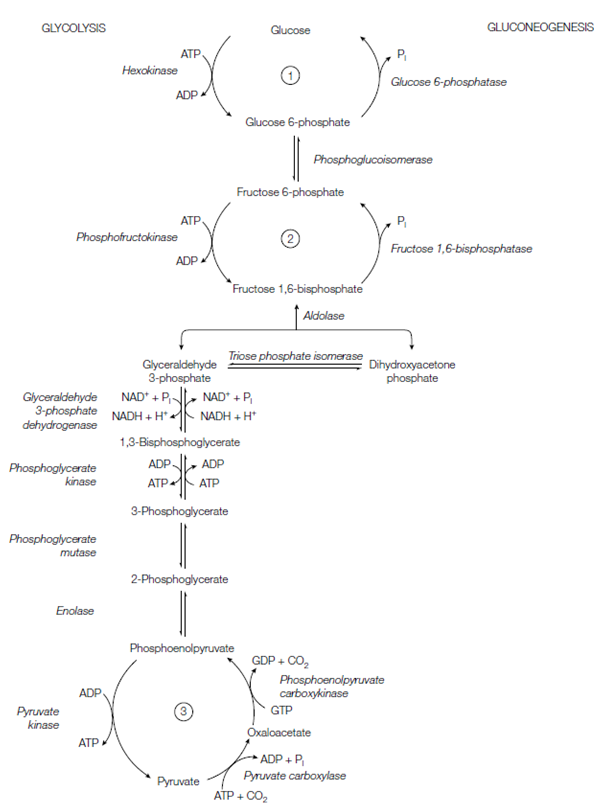Gluconeogenesis pathway:
In glycolysis the glucose is metabolized to pyruvate. In the gluconeogenesis, pyruvate is metabolized to glucose. Therefore, in principle, gluconeogenesis appears to be a reversal of glycolysis. Indeed, some of the reactions of glycolysis are reversible and so the two pathways have these steps in common. Moreover,

Figure: Comparison of gluconeogenesis and glycolysis. The three steps of glycolysis that are irreversible are numbered. (1) Hexokinase in glycolysis is reversed by glucose 6-phosphatase in gluconeogenesis; (2) PFK in glycolysis is reversed by fructose 1,6-bisphosphatase in gluconeogenesis; (3) pyruvate kinase in glycolysis is reversed by two sequential reactions in gluconeogenesis catalyzed by pyruvate carboxylase and PEP carboxykinase.
three steps in glycolysis are essentially irreversible; those catalyzed through the enzymes hexokinase, PFK (phosphofructokinase) and pyruvate kinase. Indeed it is the huge negative free-energy change in these reactions that usually drives glycolysis forward towards pyruvate formation. Therefore in the gluconeogenesis these three steps have to be reversed through using other reactions as shown in Figure; gluconeogenesis is not an easy reversal of glycolysis.